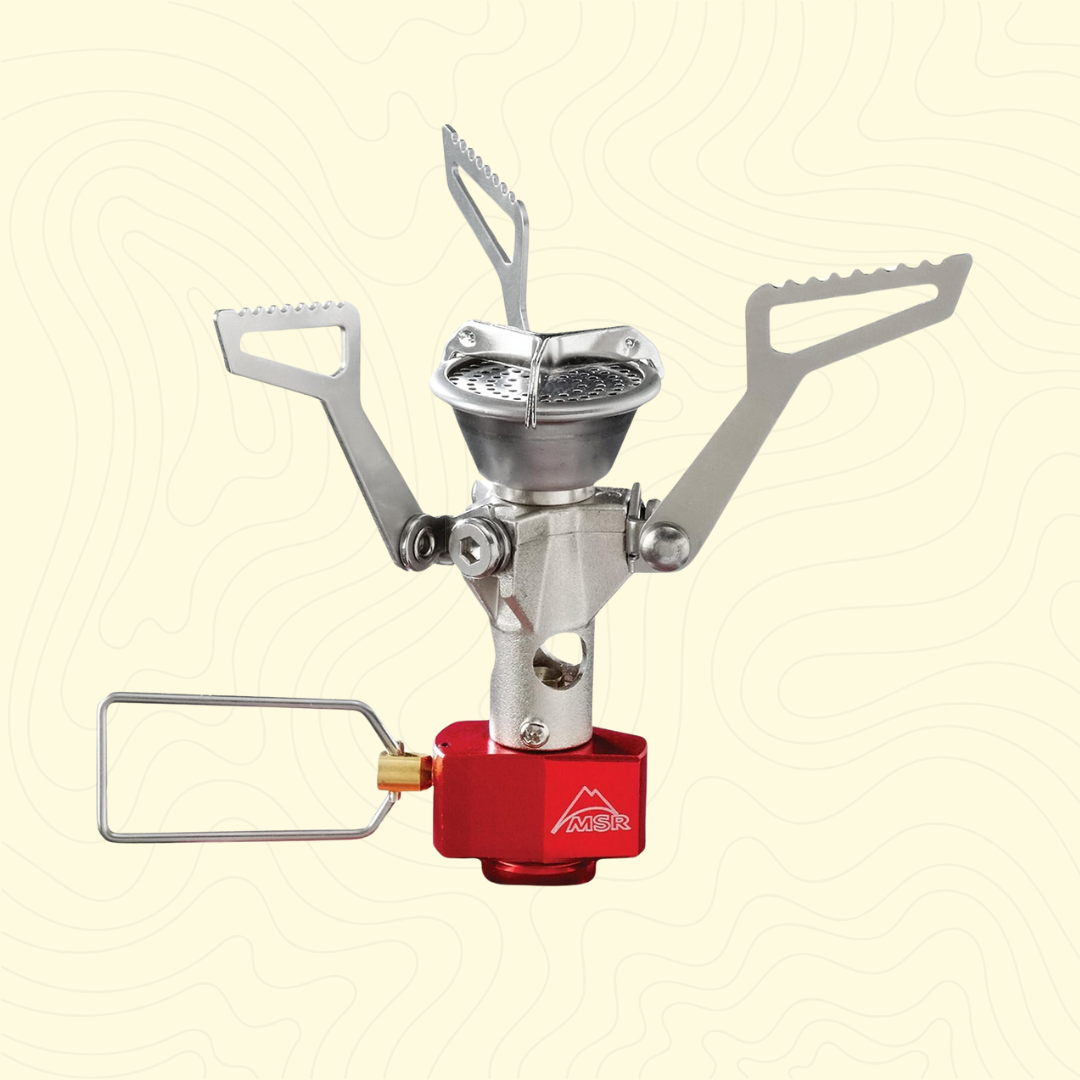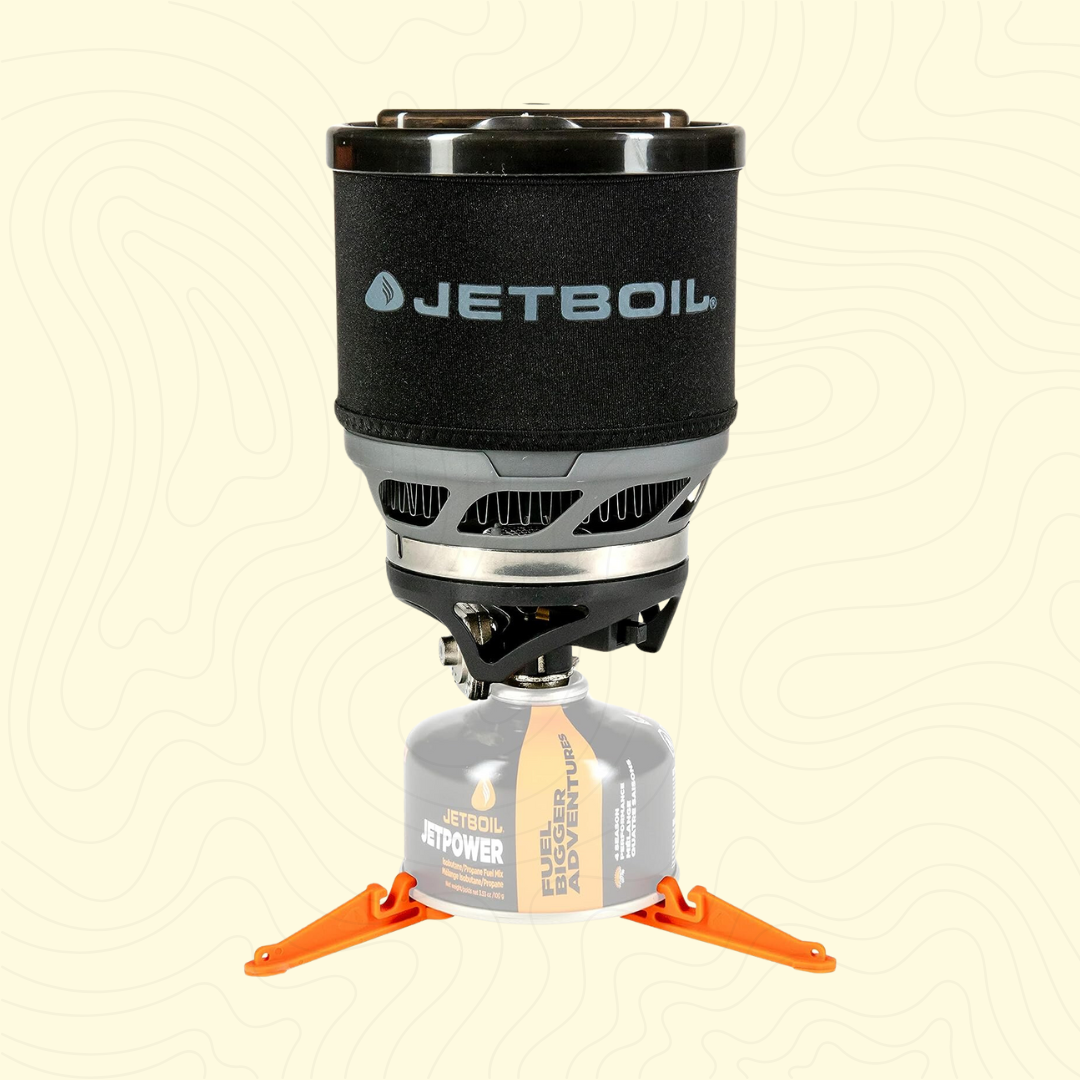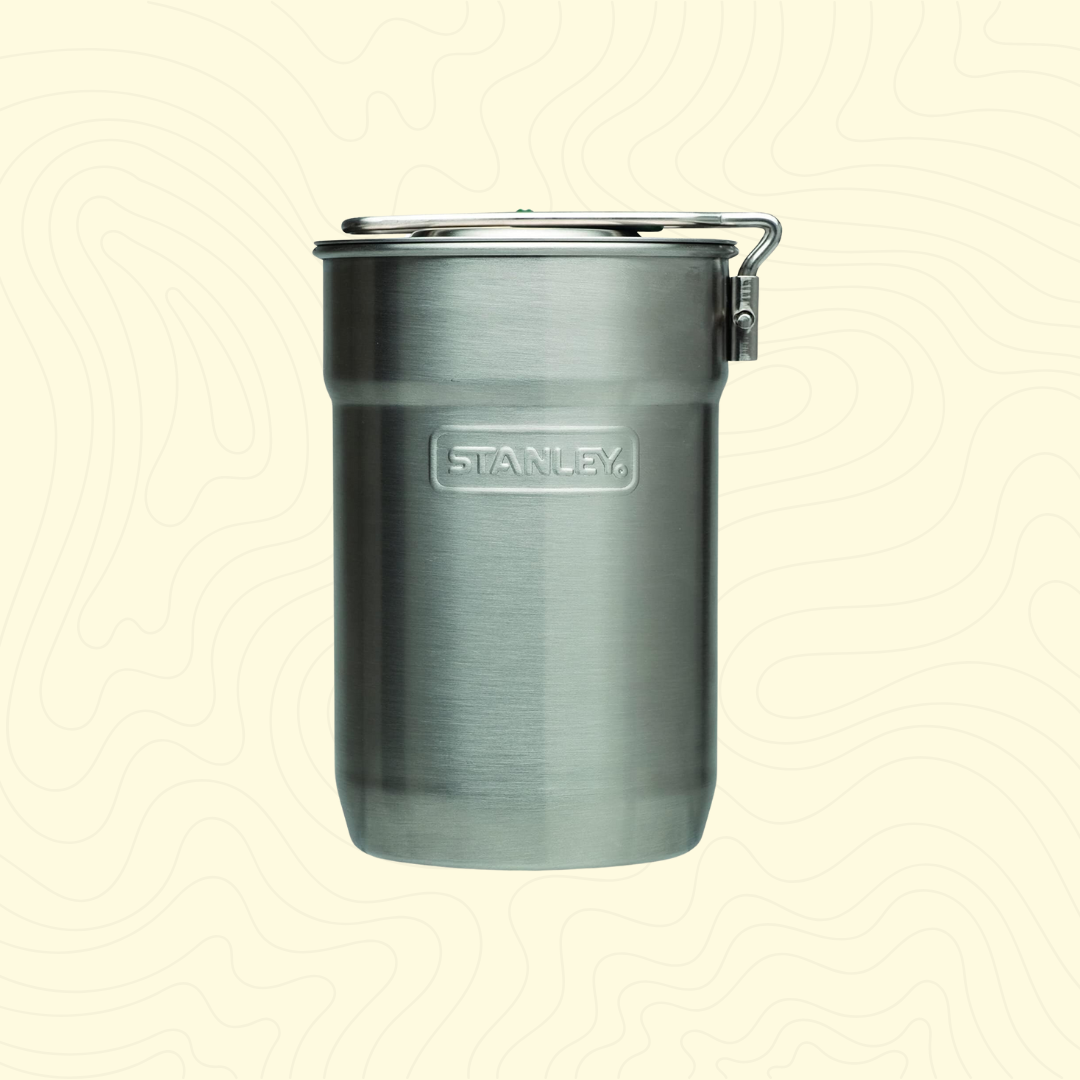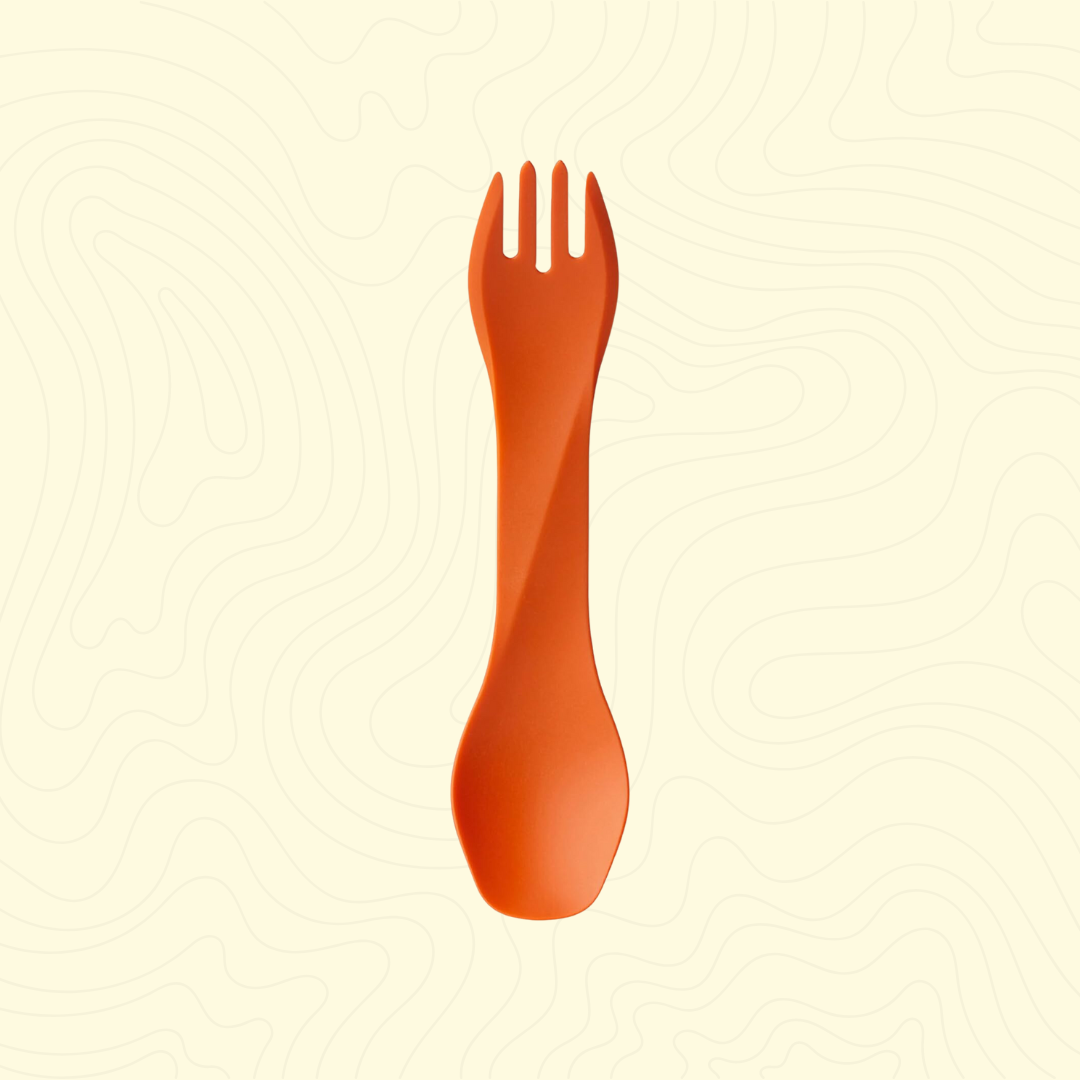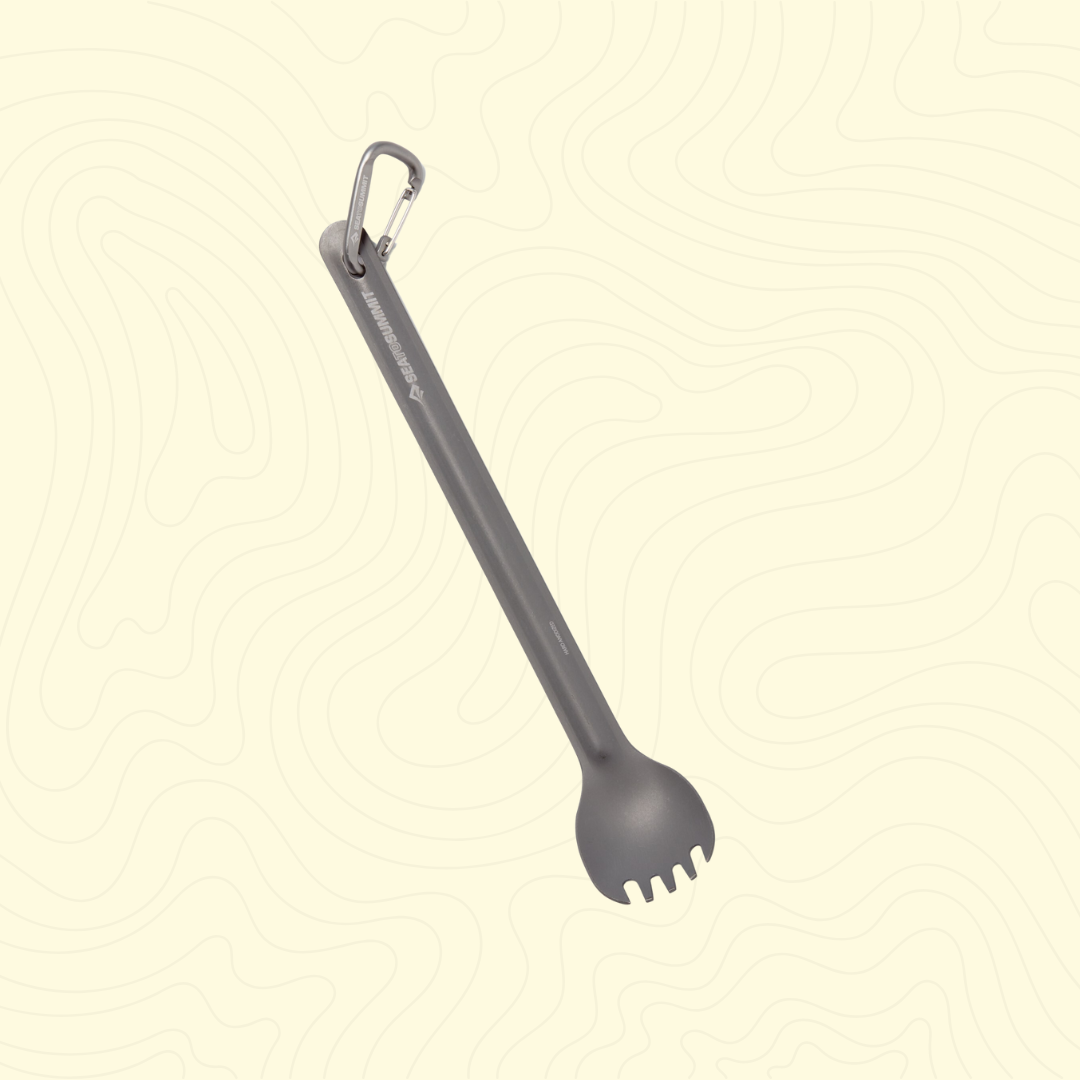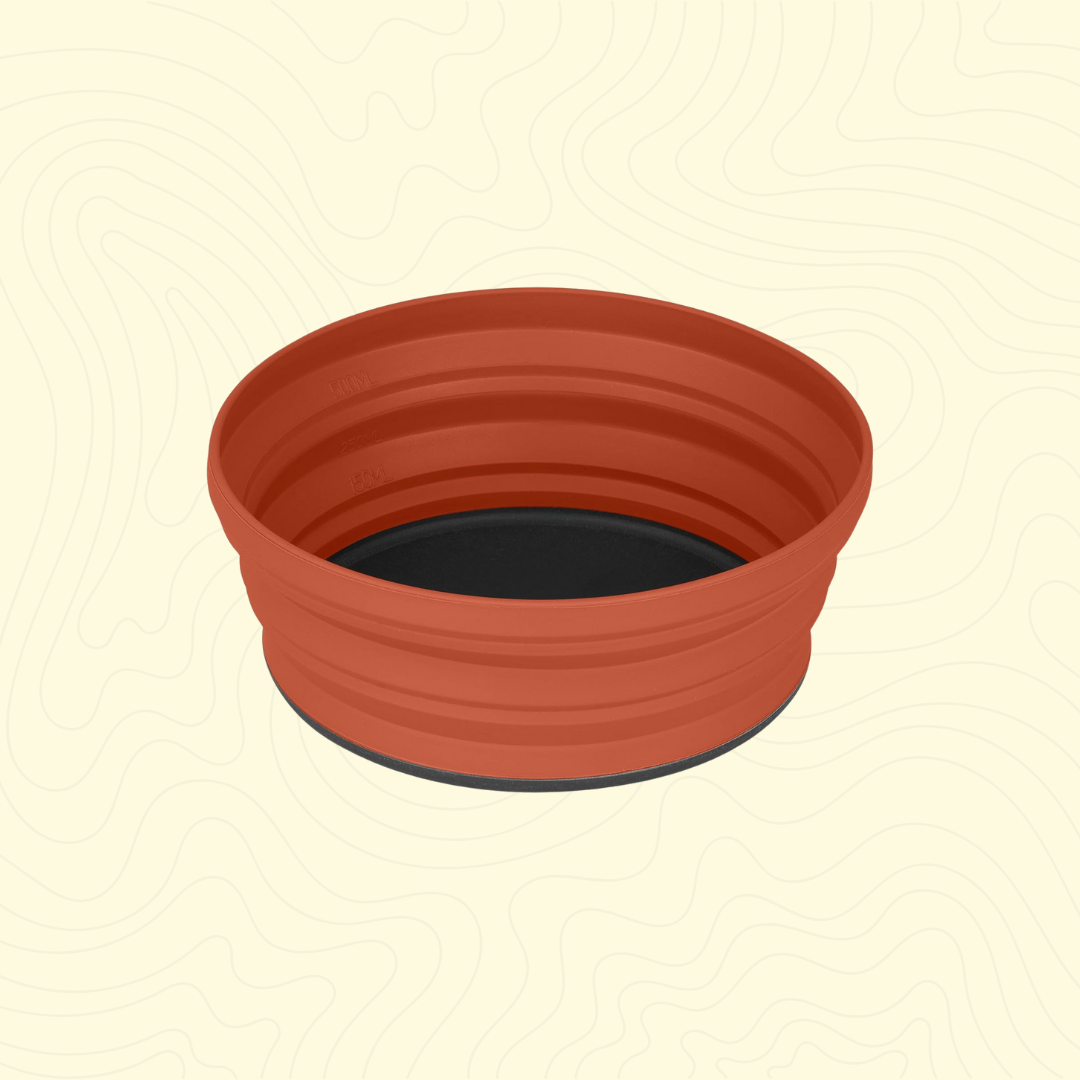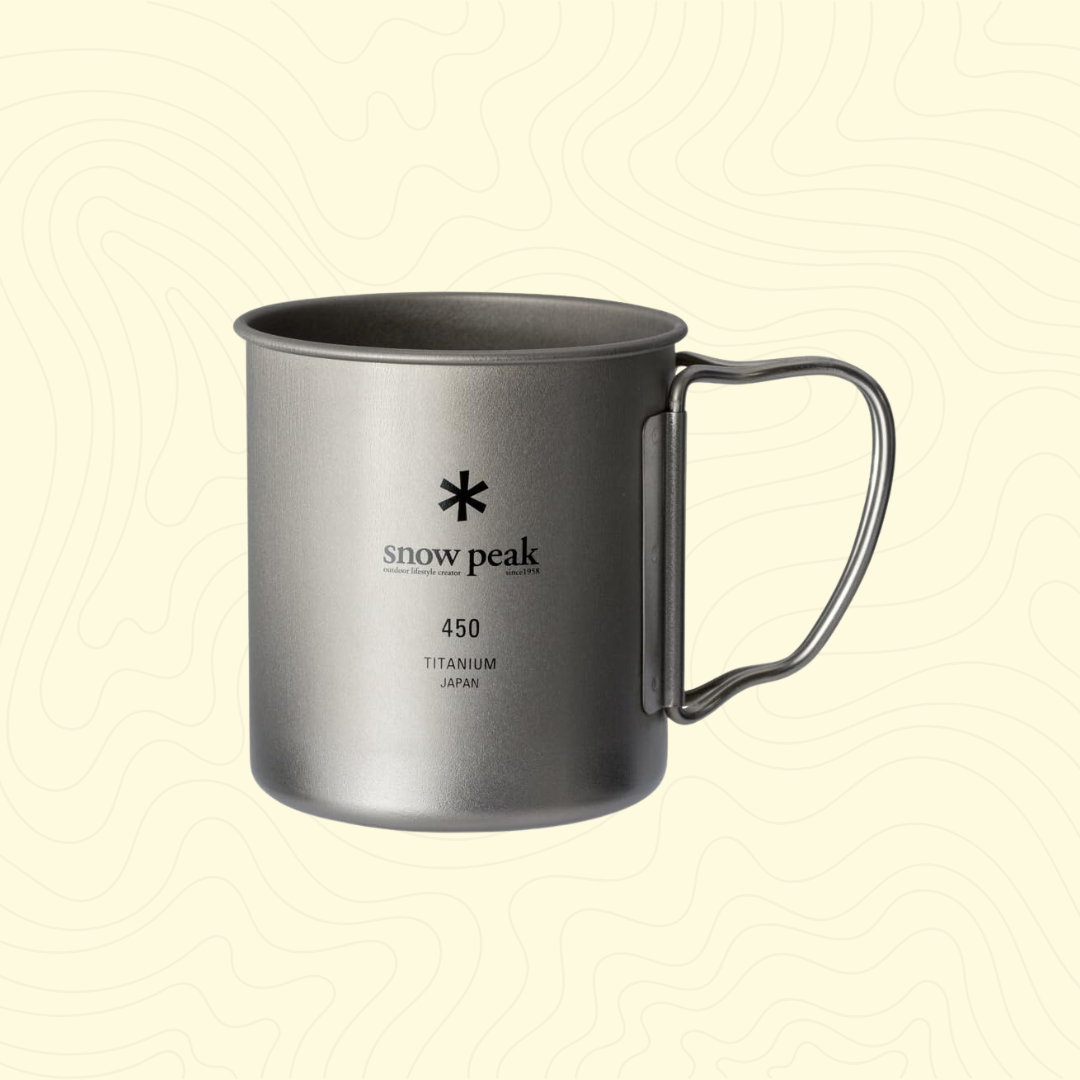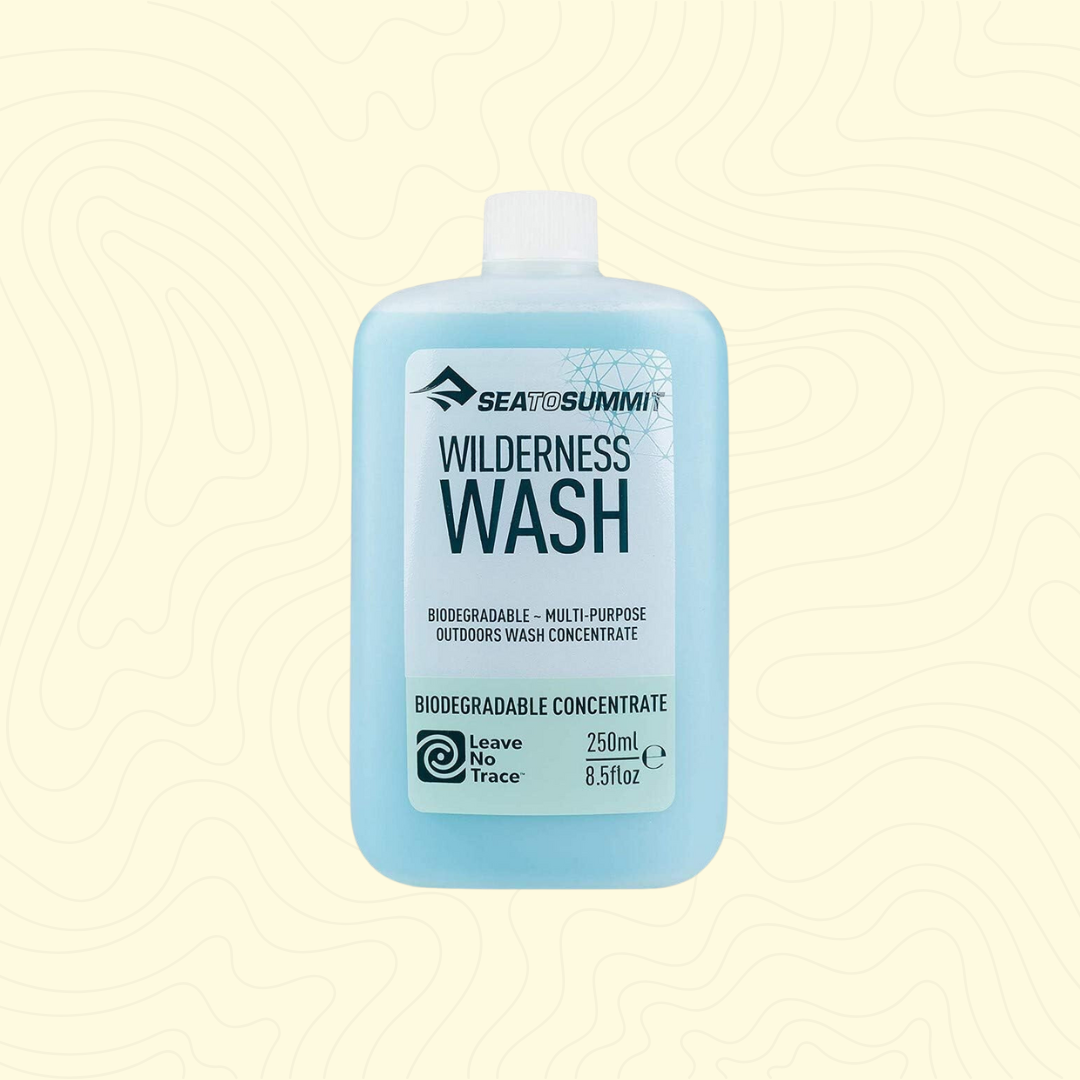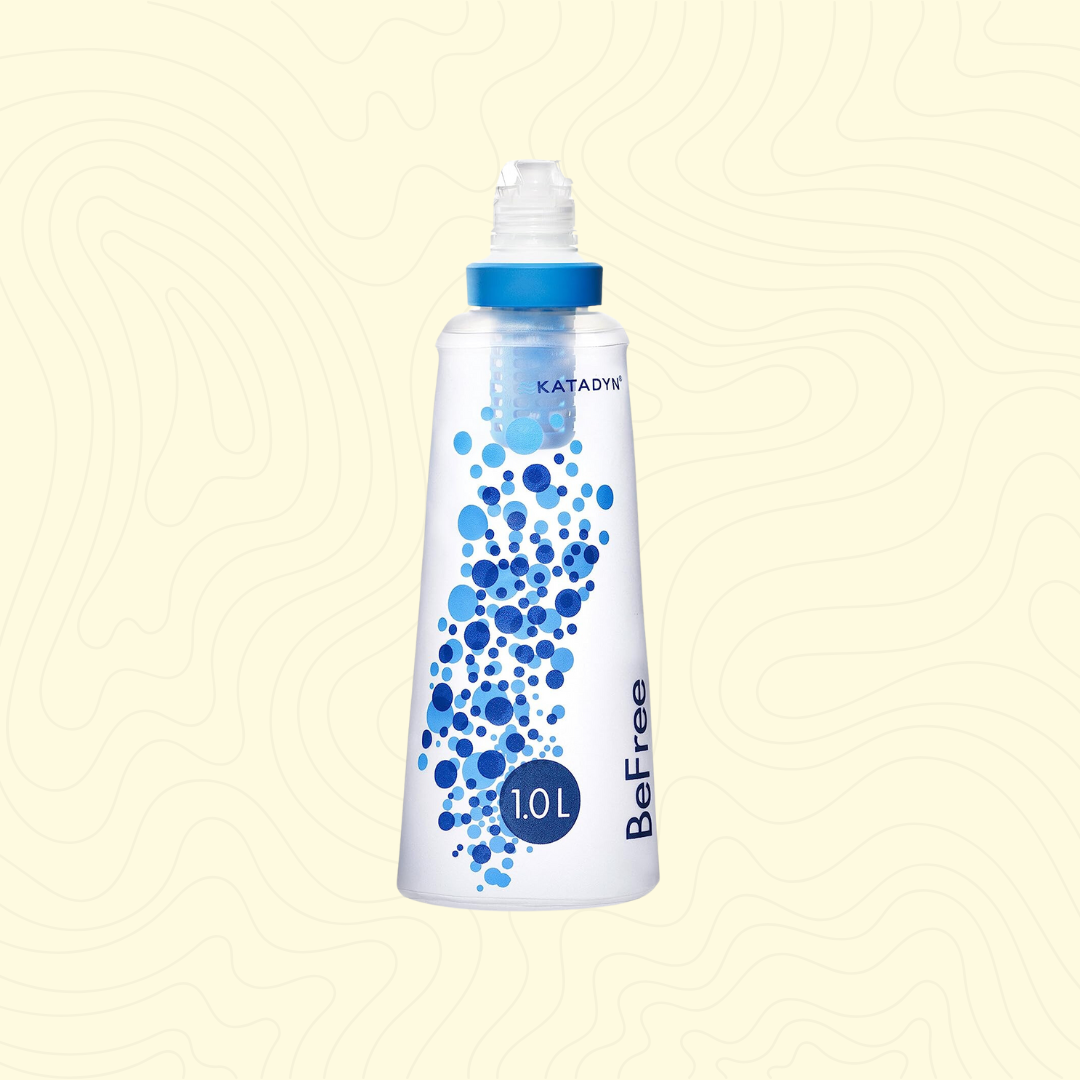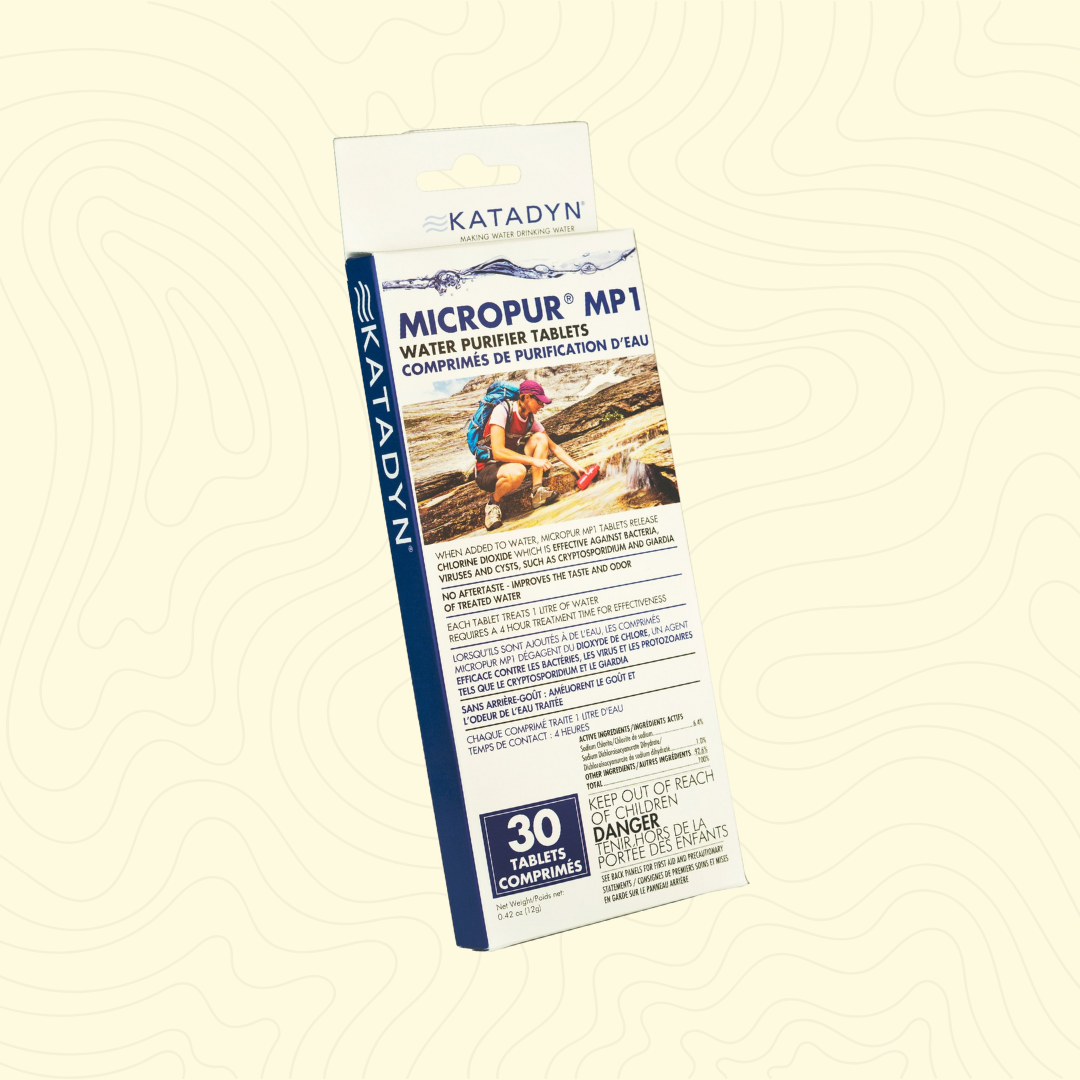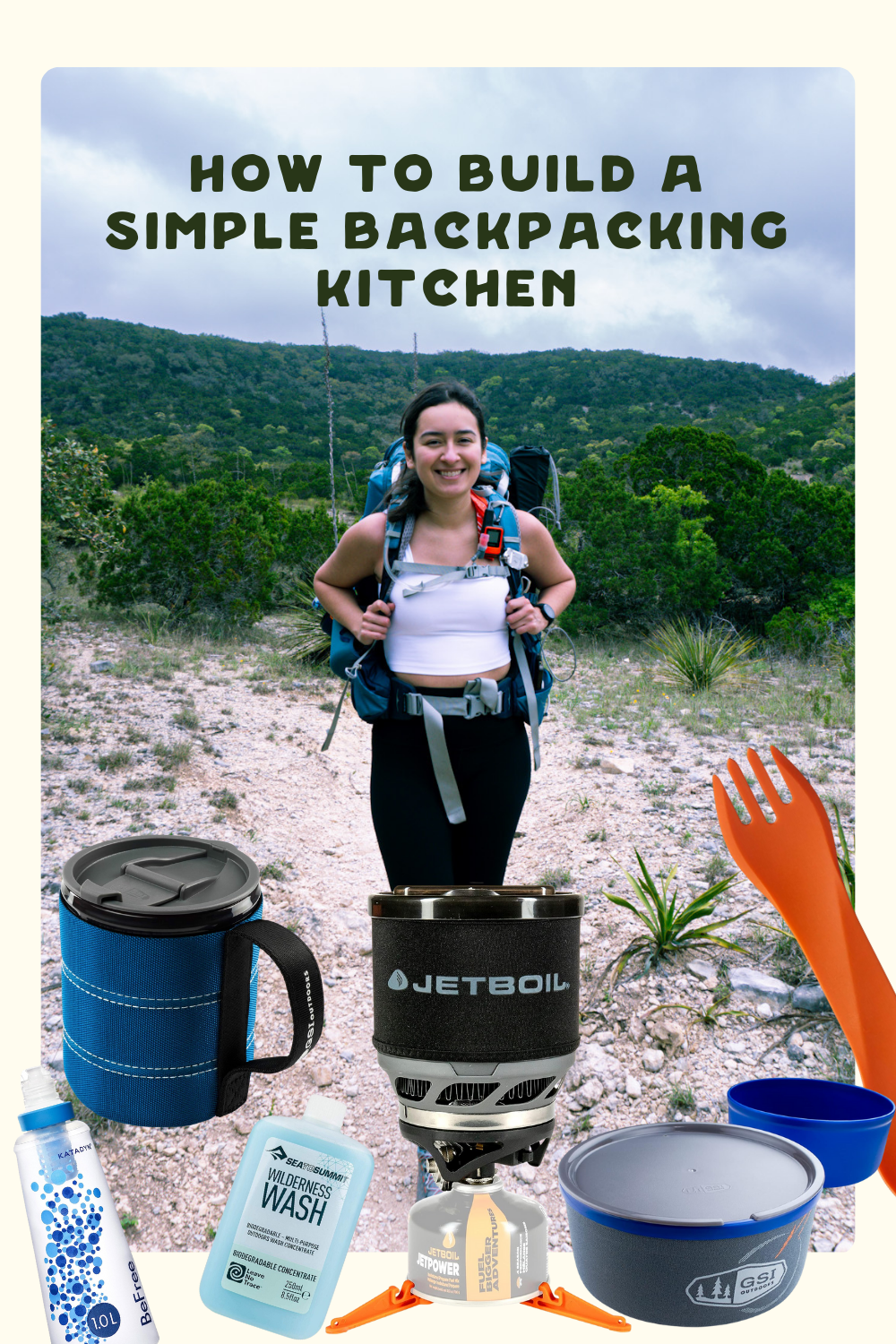How to Build a Simple Backpacking Kitchen
Backpackers clock in miles and burn a ton of calories in the process. After a long hiking session with over 20 pounds on your back, your backpacking kitchen is there to save the day. It’s one of the most essential components of your backpacking system because it allows you to make the fuel you need to continue your journey.
If you’re a beginner backpacker, it can be a little nerve-wracking sifting through hundreds of pieces of gear to find what you need for your kitchen. It’s okay! We’ve all been there. These are some of the essentials that will help you get a simple backpacking camp kitchen together for short or longer trips.
Backpacking Stove
This is one of your most essential pieces of gear—the backpacking stove! There are so many on the market, but these are the two that I have consistently encountered among hikers.
MSR PocketRocket 2
This little guy packs some power and gets the job done! It takes about 3-5 minutes to get water boiling in your pot, and it packs down into a small container. The drawback is that it does not have an igniter or wind guard (the deluxe version of the Pocket Rocket does). Other than that, I think this is a great starter stove!
Jetboil MiniMo
Ah, yes. The Jetboil. This is one of the most popular stoves on the market, and for a reason: it’s QUICK for heating water. In about a minute or two, you will have water ready for your coffee or dry meal. It does have an igniter to easily fire it up (no trying to pull your hand away after using a lighter).
Backpacking Cookware
A good pot will make a world difference in how efficiently you can boil water to cook up a meal.
Stanley Adventure Nesting Two-Cup Cookset
Stanley crafted this handy mesh kit that houses 2 cups—which could eliminate the need for a mug or a bowl (wink, wink). It has a great handle that folds into itself, a plastic lid on top so you can remove it without burning yourself, and a great price for beginners who don’t want to break the bank buying gear!
Backpacking Utensils
Utensils are key for digging into those yummy dehydrated meal pouches. I own the humangear spoon and love it, but there are some points when I wish I had a longer utensil. Off the bat, I want to say you do not need knives, forks, spoons, etc. A simple spork or spoon should do the trick!
humangear GoBites Uno
The first camping spoon I ever bought was this one! There isn’t much to say other than it is a great little tool with nice fork and spoon ends that allow you to scoop up any type of food. The only downside to this little guy is how short it is (making it hard to grab those last bits of food at the bottom of your freeze-dried meal packets).
Sea to Summit Alpha Light Long Spork
This spork is lightweight and easy to attach to the outside of your backpacking pack if needed. Its length allows you to dig into baggies of food easily, unlike shorter utensils. If you are looking for a backpacking utensil or want a new one, this one would be a great option!
Backpacking Bowls
Bowls are not really necessary. You can use your pot to make coffee and cook a meal. But if you want to enjoy your cup of joe while eating your breakfast in the morning or if you are traveling with a group of people, sometimes it helps to have separate bowls to eat out of. Here are some good ones out on the market!
GSI Ultralight Nesting Bowl
The GSI nesting bowl is small enough to fit snuggly under a Jetboil (to give you an idea of size). This set has two bowls (one is considered a mug). If you have a larger group with you or just want more containers to use for cooking, this set will be your friend!
Backpacking Mugs
There’s nothing like a good ol’ mug to drink coffee or tea out of when waking up in the wild! Similar to the bowls, you don’t always need a mug but it is helpful to have if you love to enjoy a hot drink while eating a meal.
GSI Outdoors Infinity Mug
This mug is my favorite. I love how it is lightweight and insulated. One bonus is the material handle strap, which allows the mug to fit snuggly into a backpack! It also has a convenient lid that you can open and close to keep your drink from spilling out.
Snow Peak Mug
The Snow Peak mug is one of the most beautifully designed mugs on the market. It’s used by those who climb the highest peaks (hence the name) and want something durable and lightweight to keep their drinks warm. The handles fold into the sides of the mug. The only downside I’ve seen with this mug is how fragile it can be (it is easy to dent it).
Backpacking Food Storage
Food storage is essential for any backpacking trip. You want to protect yourself and your food stash from wildlife like raccoons and bears. If you are backpacking in bear country, always research what protocol you need to follow when it comes to food storage.
BearVault BV500 Food Container
If you are traveling to bear country, a food canister like this one can come in handy to seal in odors that will attract bears and other wildlife to your camp (eliminating the need to hang your food far from camp). And if you need some extra seating, they can be used as a stool!
Dishwashing on BACKPACKING TRIPs
If you’re doing more than an overnight trip, it helps to have a few handy cleaning items to freshen up your backpacking camp kitchen.
Sea to Summit Wilderness Wash
I used this wash to clean everything from my hands to dishes while camping in Yosemite. It gets the job done, and I love how I can use it for a variety of items!
Water Filtration and Water Bottles
Water filtration is one of the most important things to keep in mind when venturing out into the backcountry. Always research the area you plan to backpack in for water sources and check the water conditions. I didn’t list a photo below, but always have an extra 1 liter bottle handle to store extra water. A Nalgene will do perfectly!
Katadyn BeFree Filter
One of the best water filters I’ve come across is the Katadyn BeFree. It allows you to gather water and filter it very quickly. There are so many videos of people putting it to the test and being shocked by how well it can remove debris and dirt from the water. I’ve used it in Yosemite National Park and some local Texas State Parks and never had any issues!
Katadyn Micropur Purification Tablets
To add an extra level of water purification after using a filter, you can always throw a purification tablet in your liter of water to kill bacteria. It takes up to four hours for these Katadyn tablets to work their magic. If the water source you pull water from seems questionable, you can always use a tablet for peace of mind!
Building a Backpacking Kitchen Set
Aside from your sleep system, the camp kitchen is a key component of your backpacking gear. As I’ve mentioned throughout this post, some items are multi-use, eliminating the need for other gear. A bear canister can be a stool, so you don’t need your camp chair. The Stanley kit has two cups, so you may not need extra bowls. After going on a few trips, you’ll start to see what you need and don’t need.
Now that you know what to include in your simple backpacking camp kitchen, get packing for your backpack trip, and cook some delicious meals. Happy hiking!
This blog post contains affiliate links for products I love, meaning I get a commission if you decide to purchase through my links, at no cost to you. Thanks for your support!

